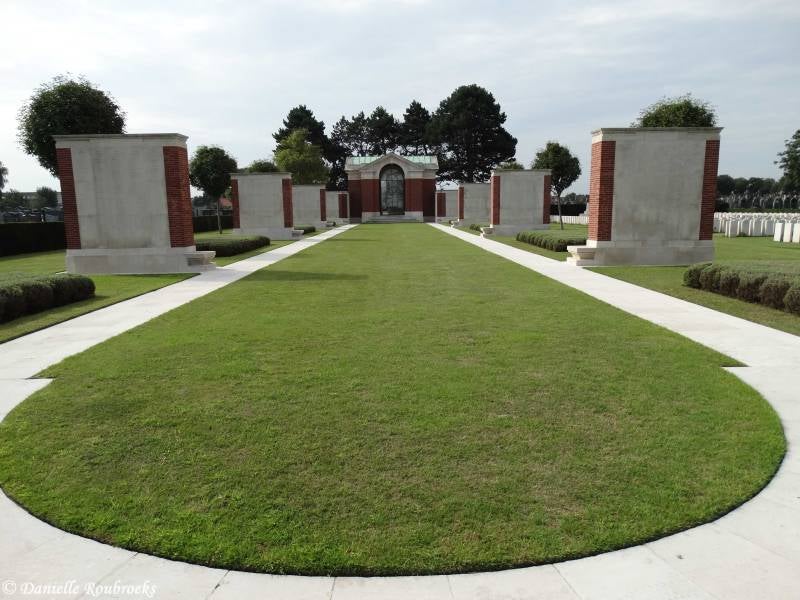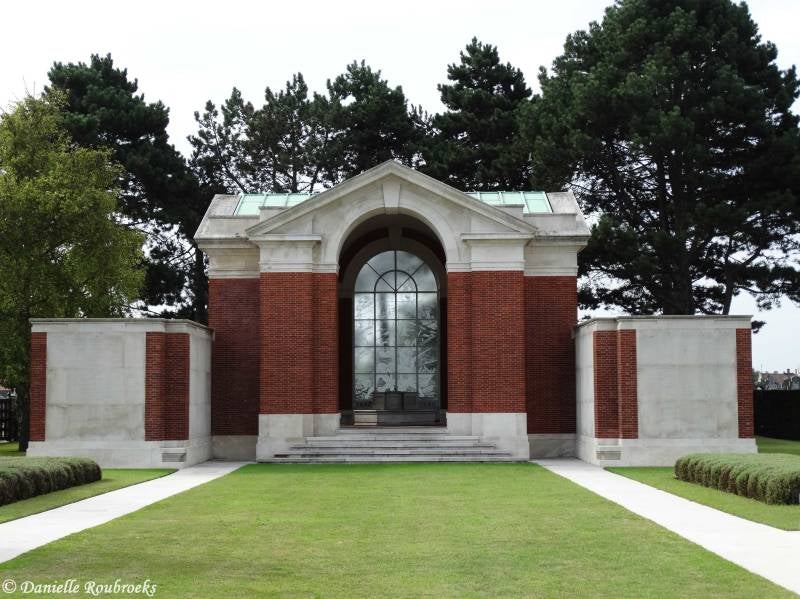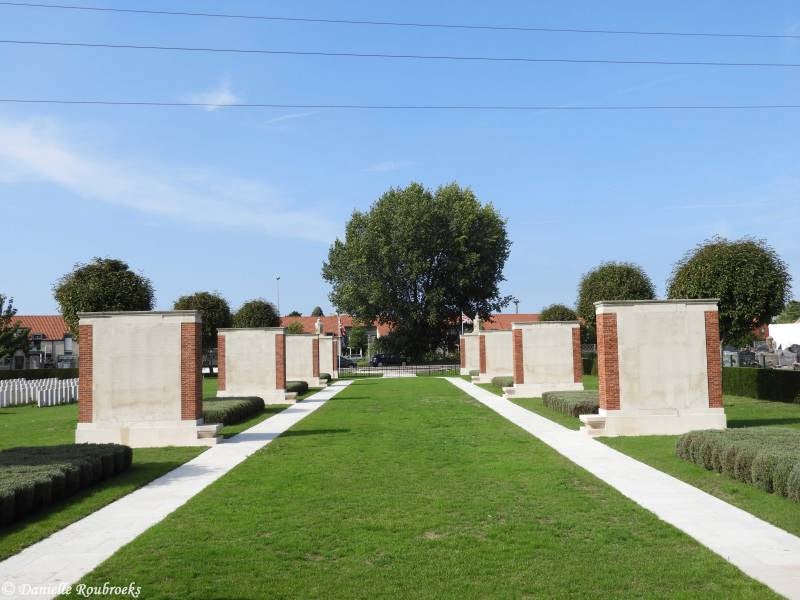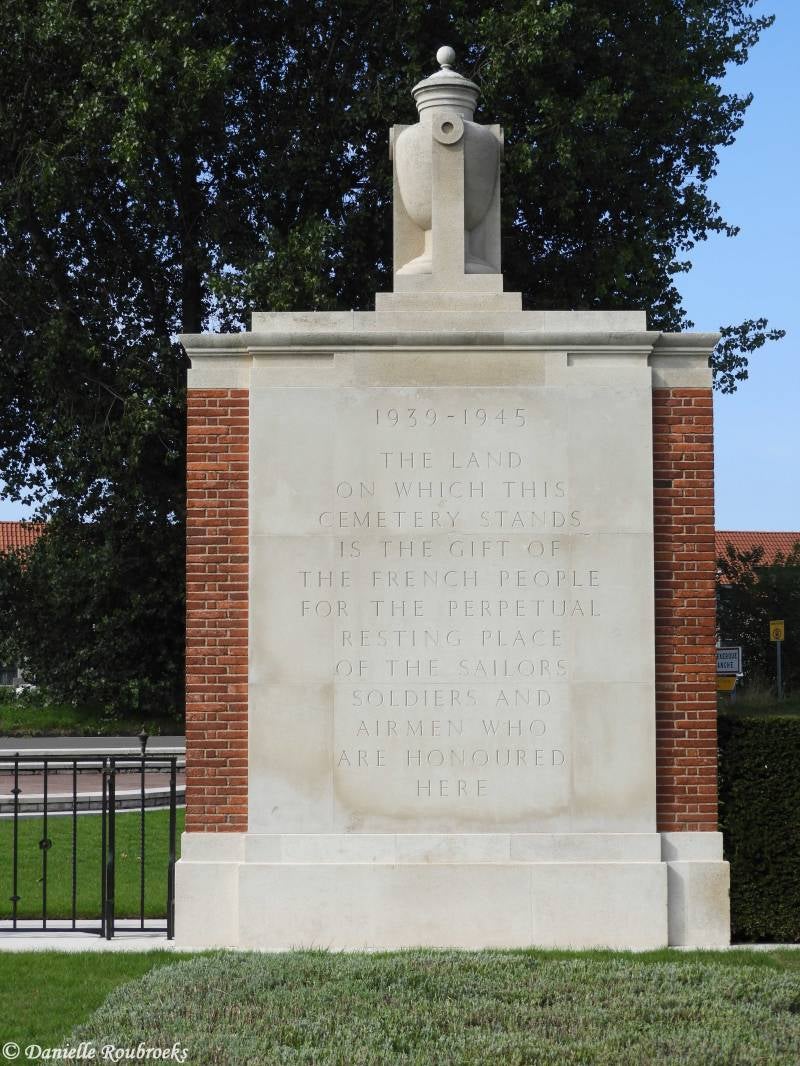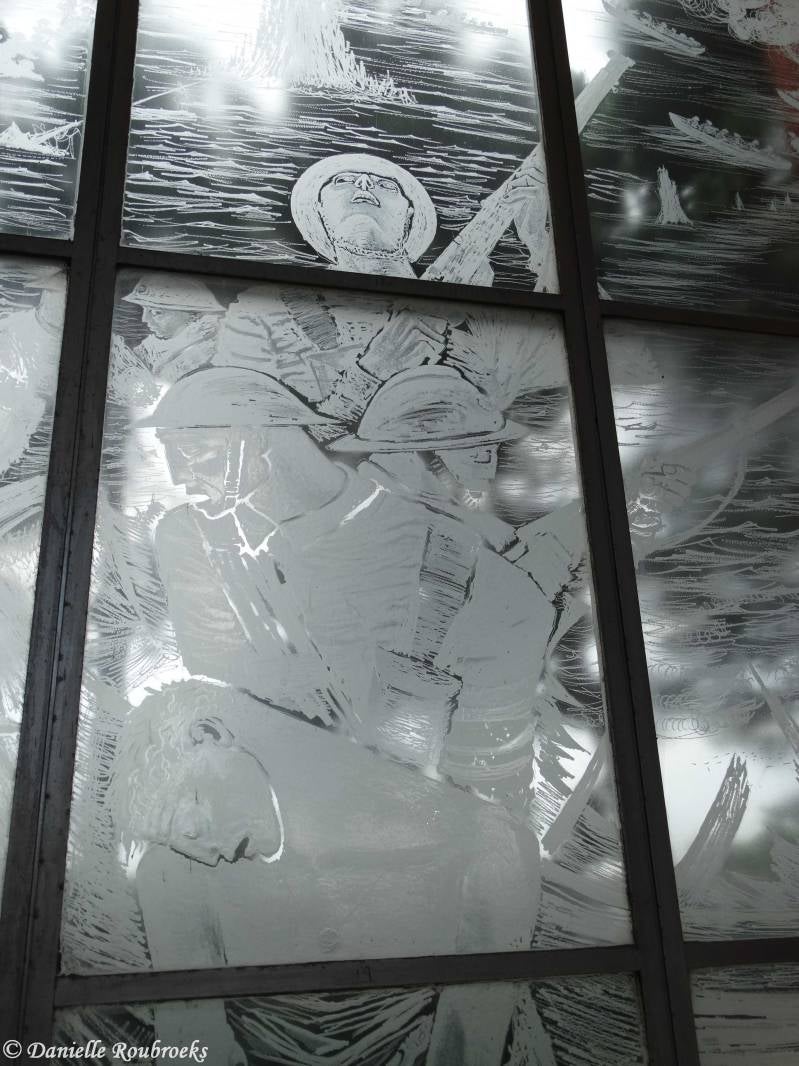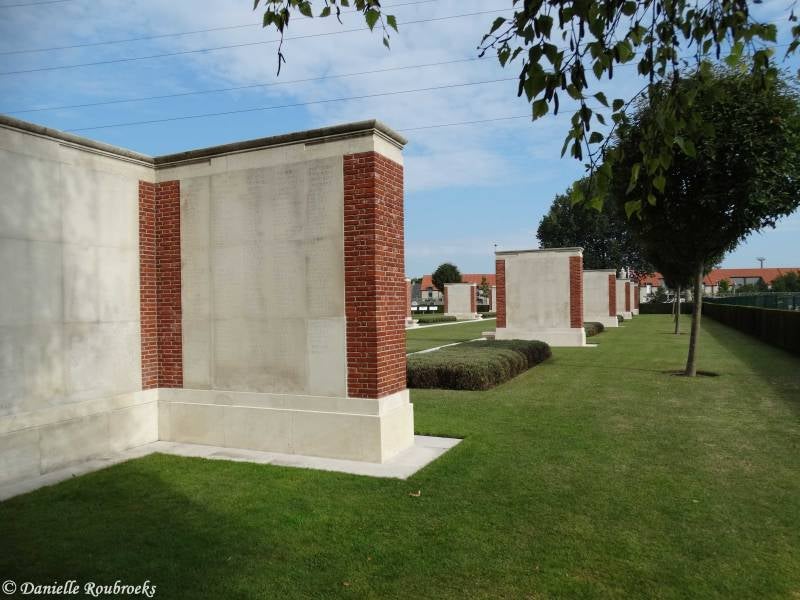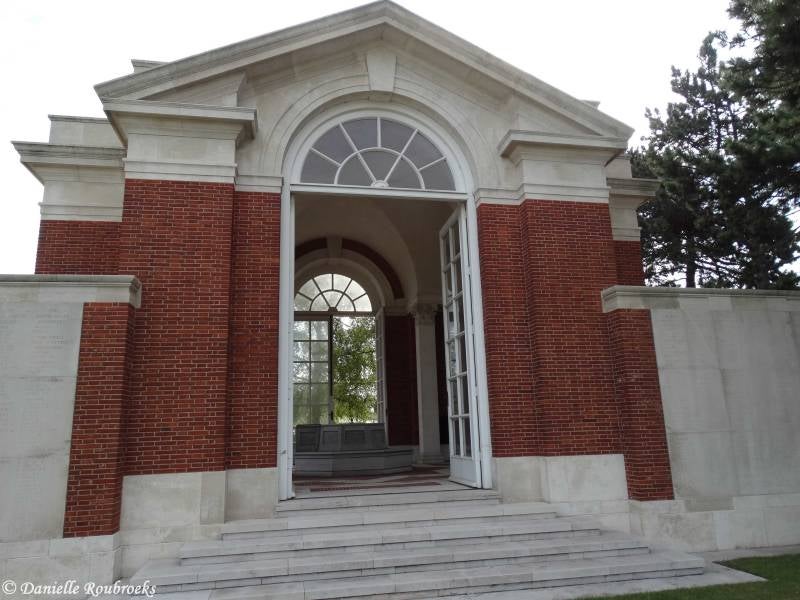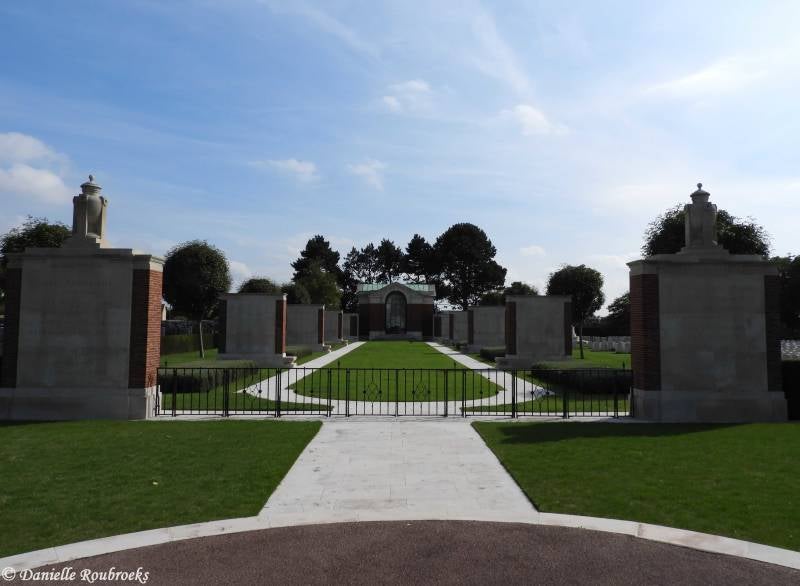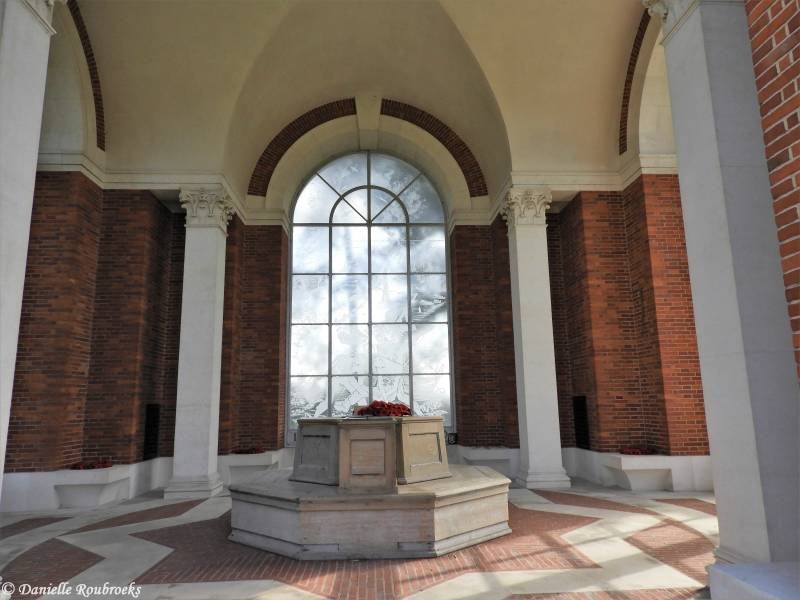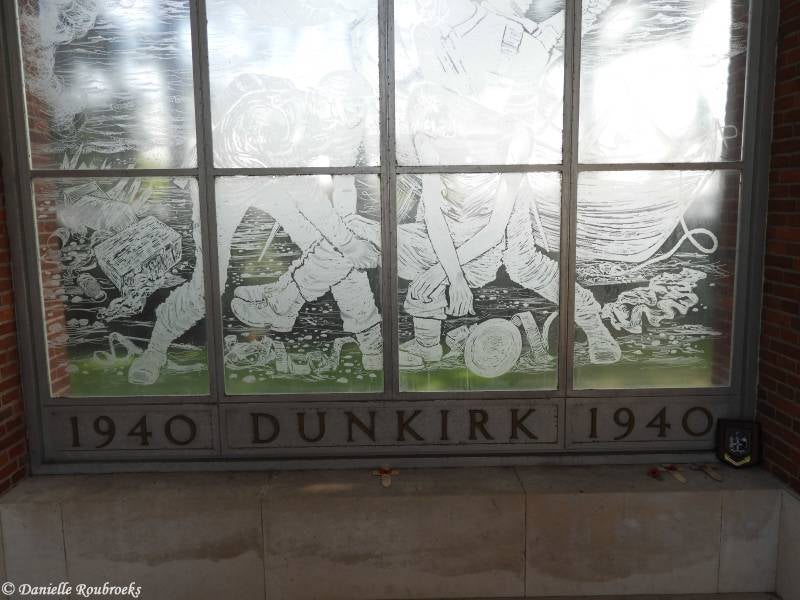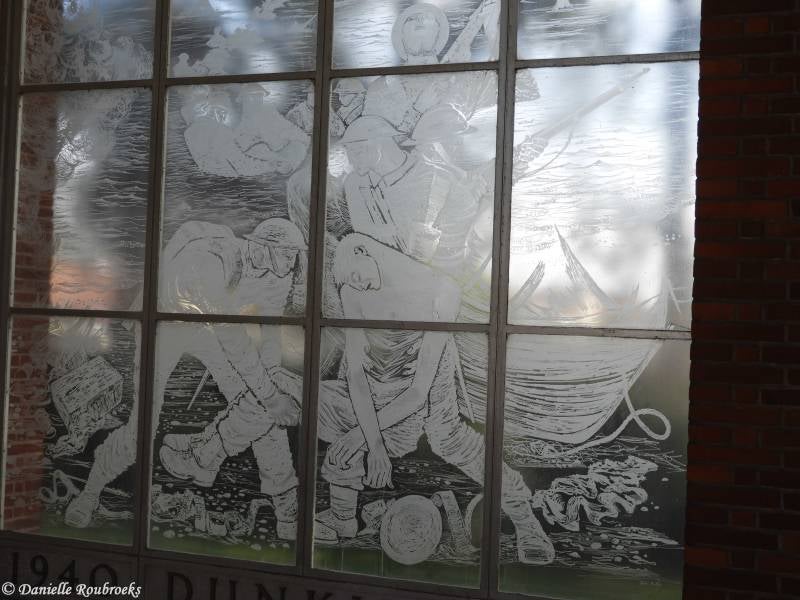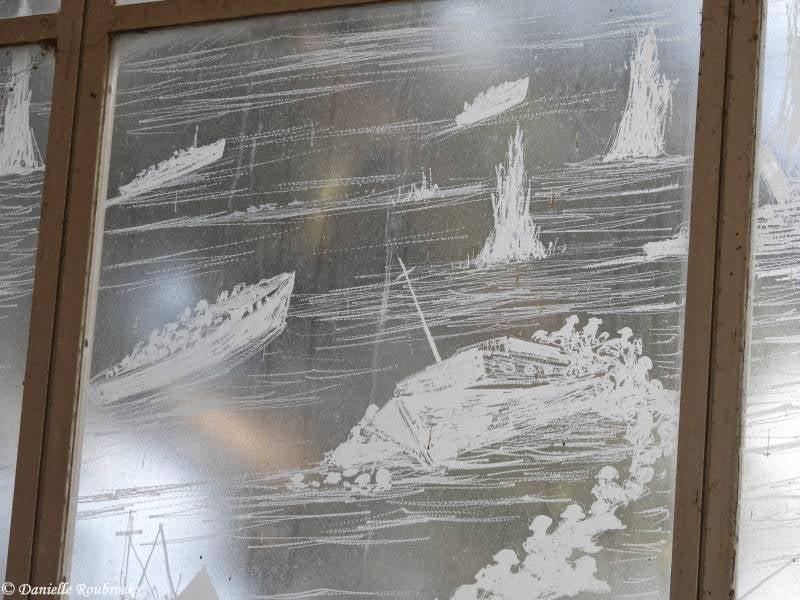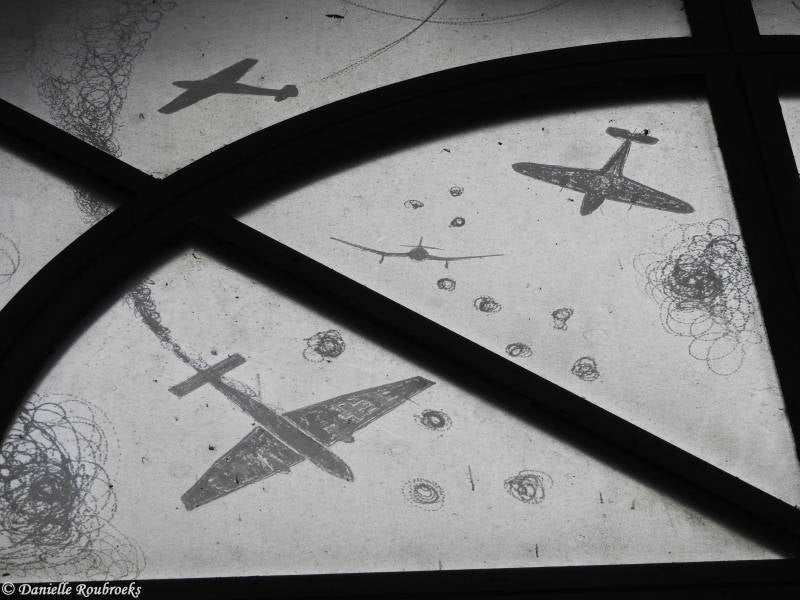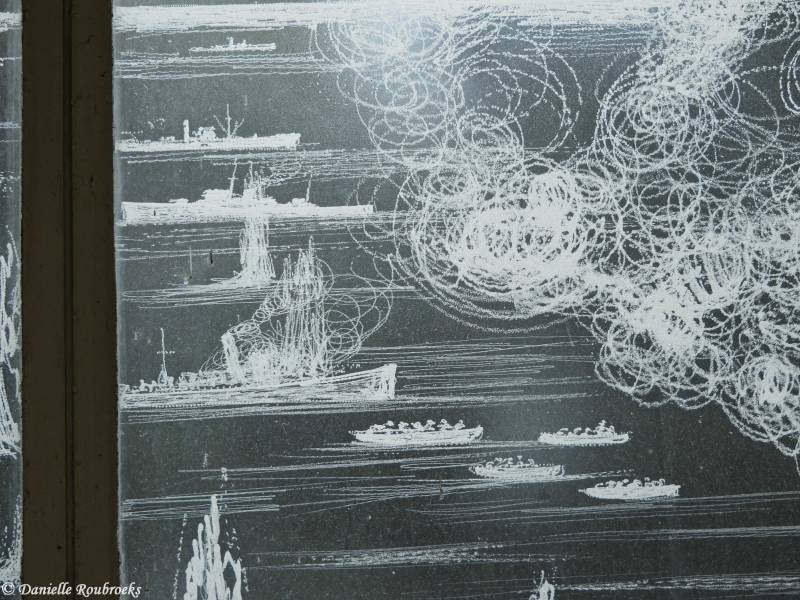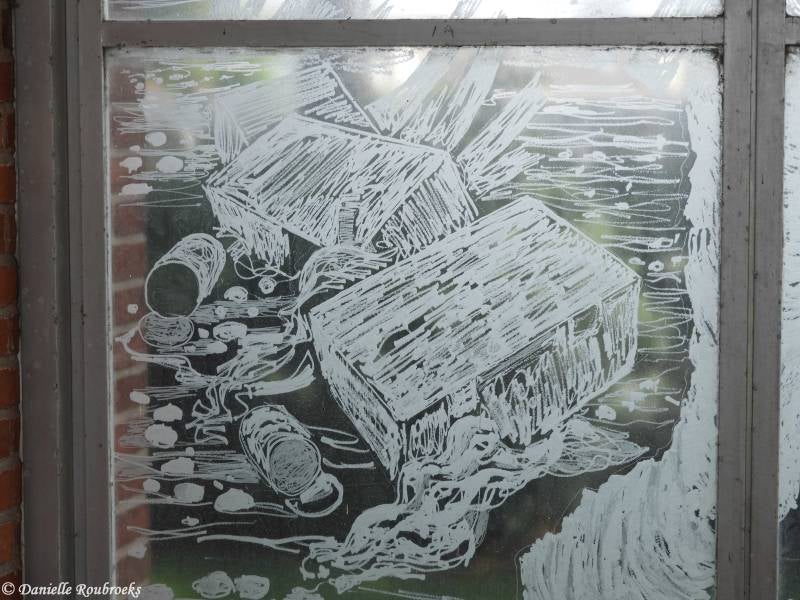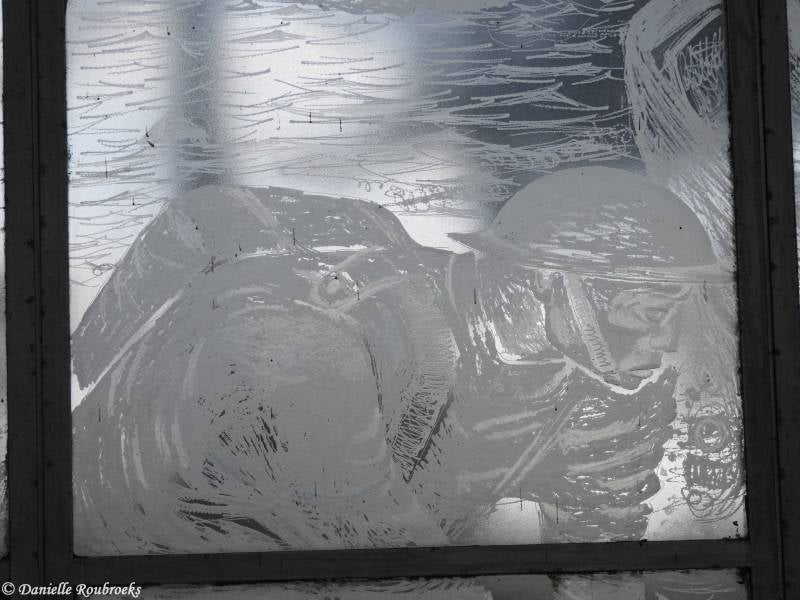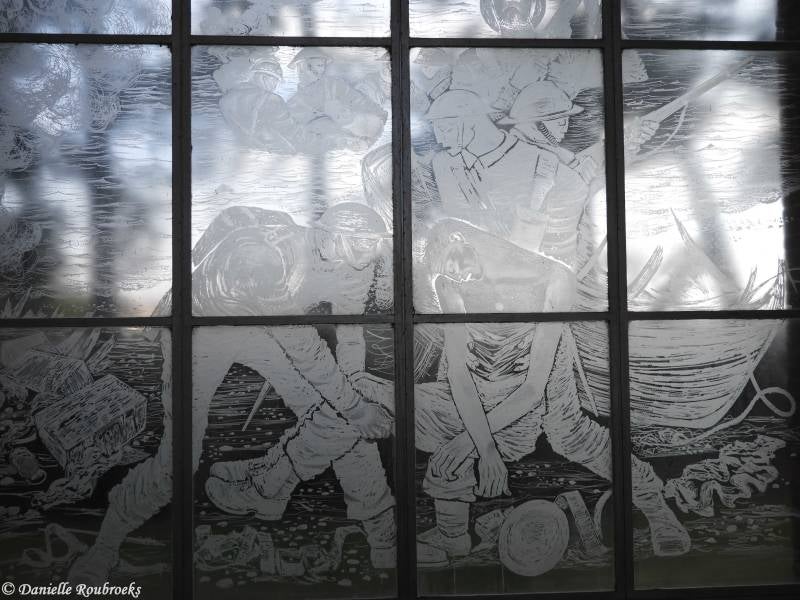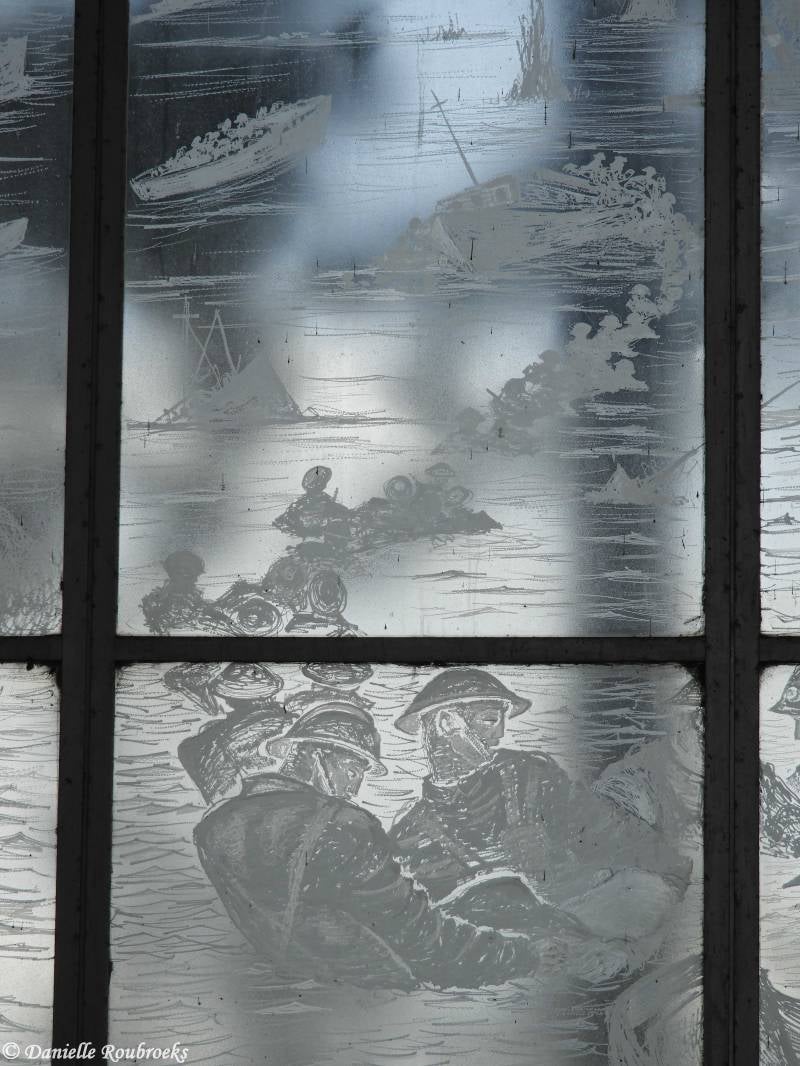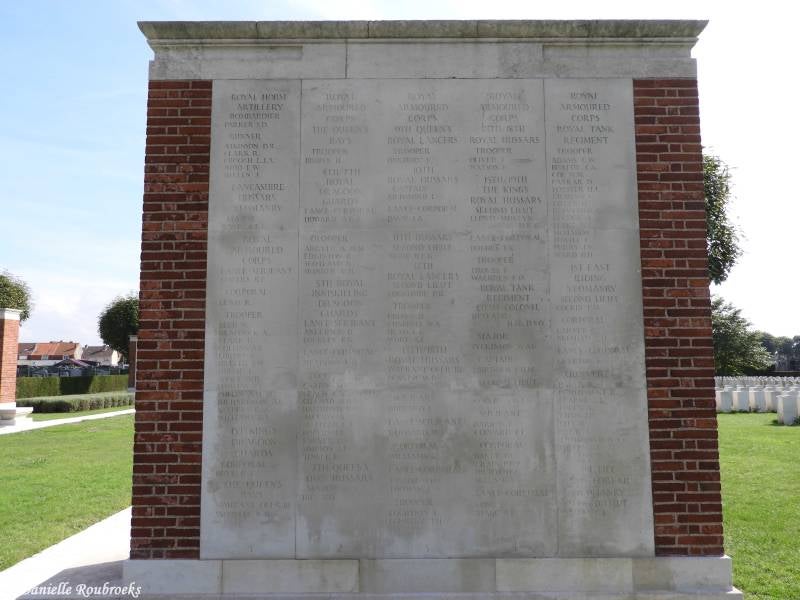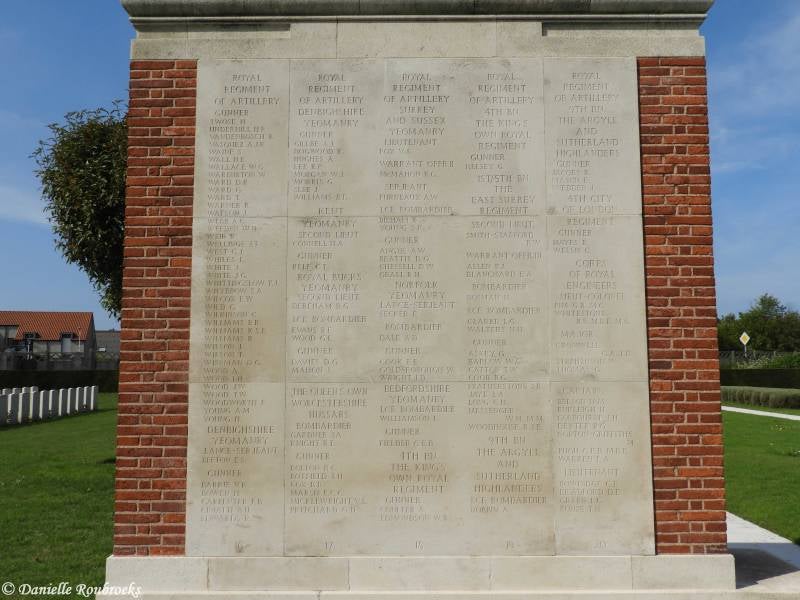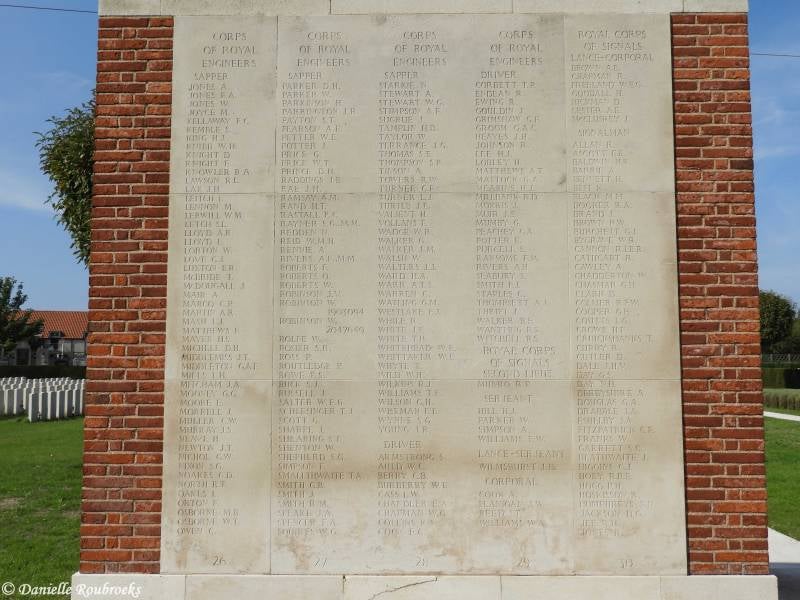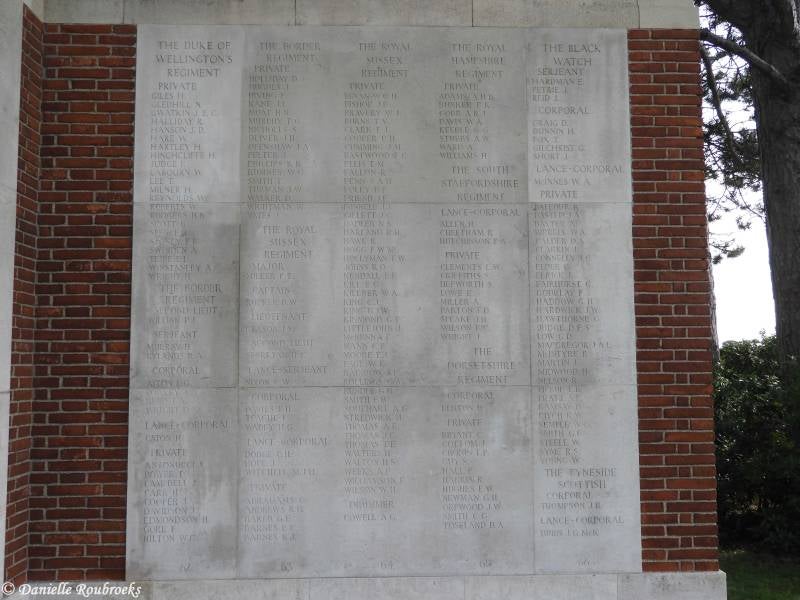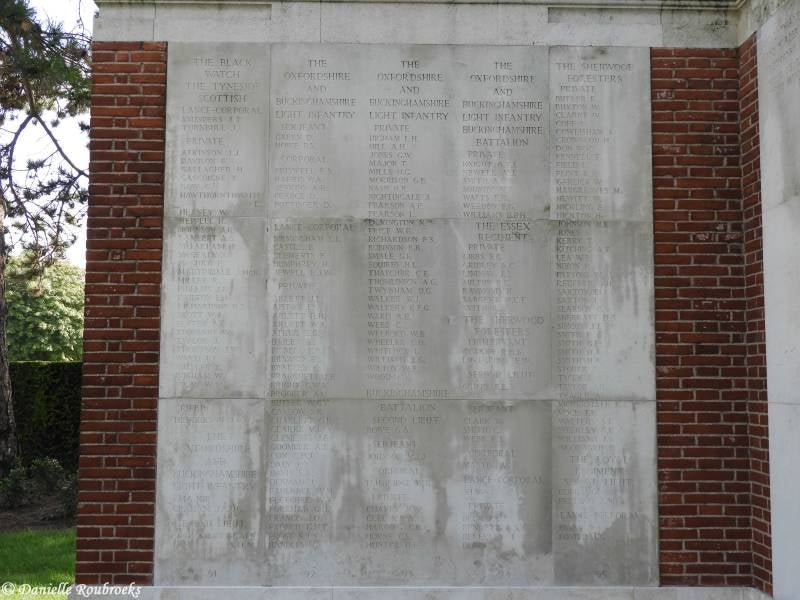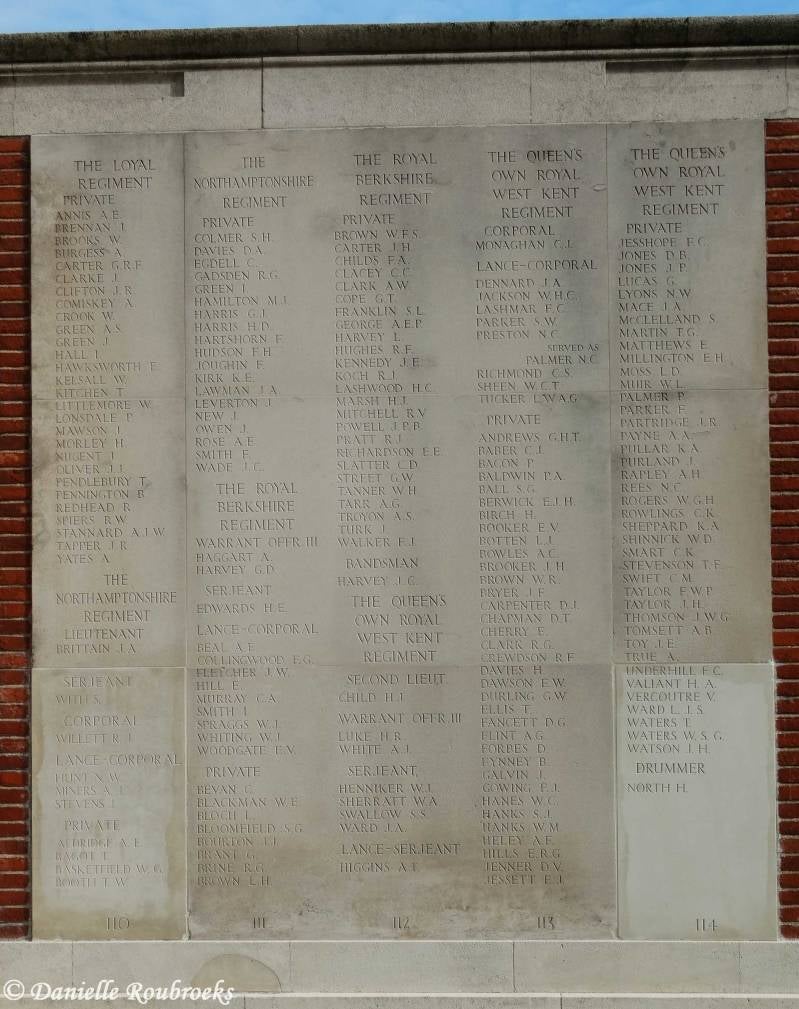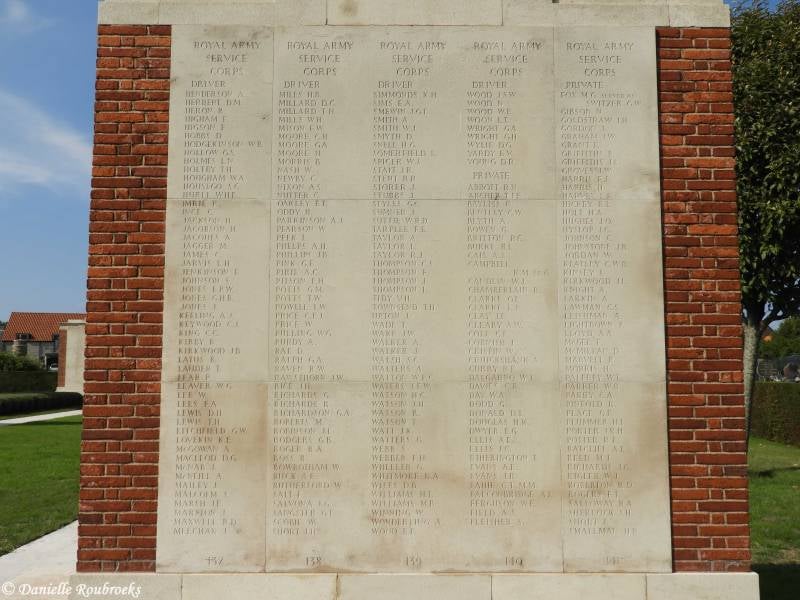Dunkirk Memorial
Historical Information (Source: CWGC)
Dunkirk witnessed the landing of the British Expeditionary Force in September and October 1914. Throughout the First World War it was a seaplane base and later an American Naval Air Service base. The town was also a French hospital centre and the 8th Canadian Stationary Hospital was there from November 1918 to April 1919. Although an estimated 7,500 shells and bombs fell on the town during the war, ship building and other port activities continued. However, it was in 1940 that its name acquired a new significance.
The memorial takes the form of an avenue of pylons on which the names are engraved, leading to a building of brick and stone with a coper roof. At the entrance to the avenue are two columns, surmounted by carved stone urns bearing inscriptions in English and French.
A shrine contains the memorial register of names. At the back of the shrine facing the entrance is a great window of etched and engraved glass. Designed by John Hutton, it depicts scenes from the evacuation. The artist and glass engraver was born in New Zealand in 1906.
Dunkirk Memorial commemorates more than 4,500 casualties of the British Expeditionary Force who died or were captured there and have no known grave. The cemetery and memorial are open daily.
VICTORIA CROSS
Lieutenant The Hon. Christopher FURNESS - 53422 - 1st Bn. Welsh Guards
Died 24 May 1940
Country of Service: United Kingdom
Awards: Victoria Cross
Citation
The citation in the London Gazette of 5th February, 1946, gives the following details: Lt. Furness was in command of the Carrier Platoon, Welsh Guards, from May 17th-24th, 1940, at Arras. His extremely high degree of leadership and dash imbued his command with a magnificent offensive spirit during their constant patrols and many local actions throughout this period. On May 22nd, 1940, he was wounded, but refused to be evacuated. The enemy had encircled the town on three sides, and Lt. Furness's platoon, together with a small force of light tanks, were ordered to cover the withdrawal of over 40 transport vehicles to Douai.
Heavy small arms and anti-tank gun fire blocked the column. Lt. Furness, realising the seriousness of the situation, with three carriers and the light tanks attacked at close quarters the strongly entrenched enemy, inflicting heavy losses. His carriers were hit, most of their crews killed or wounded, and the tanks were put out of action. When his own carrier was disabled and the driver and gunner killed, Lt. Furness, despite his wounds, engaged the enemy in hand to hand combat until he was killed. His magnificent act of self-sacrifice against hopeless odds made the enemy withdraw long enough to allow the large transport column to get clear unmolested, and to permit the evacuation of some of the wounded of his own platoon and of the light tanks.
Grave Reference: Column 34.
(Source: Wikipedia)






